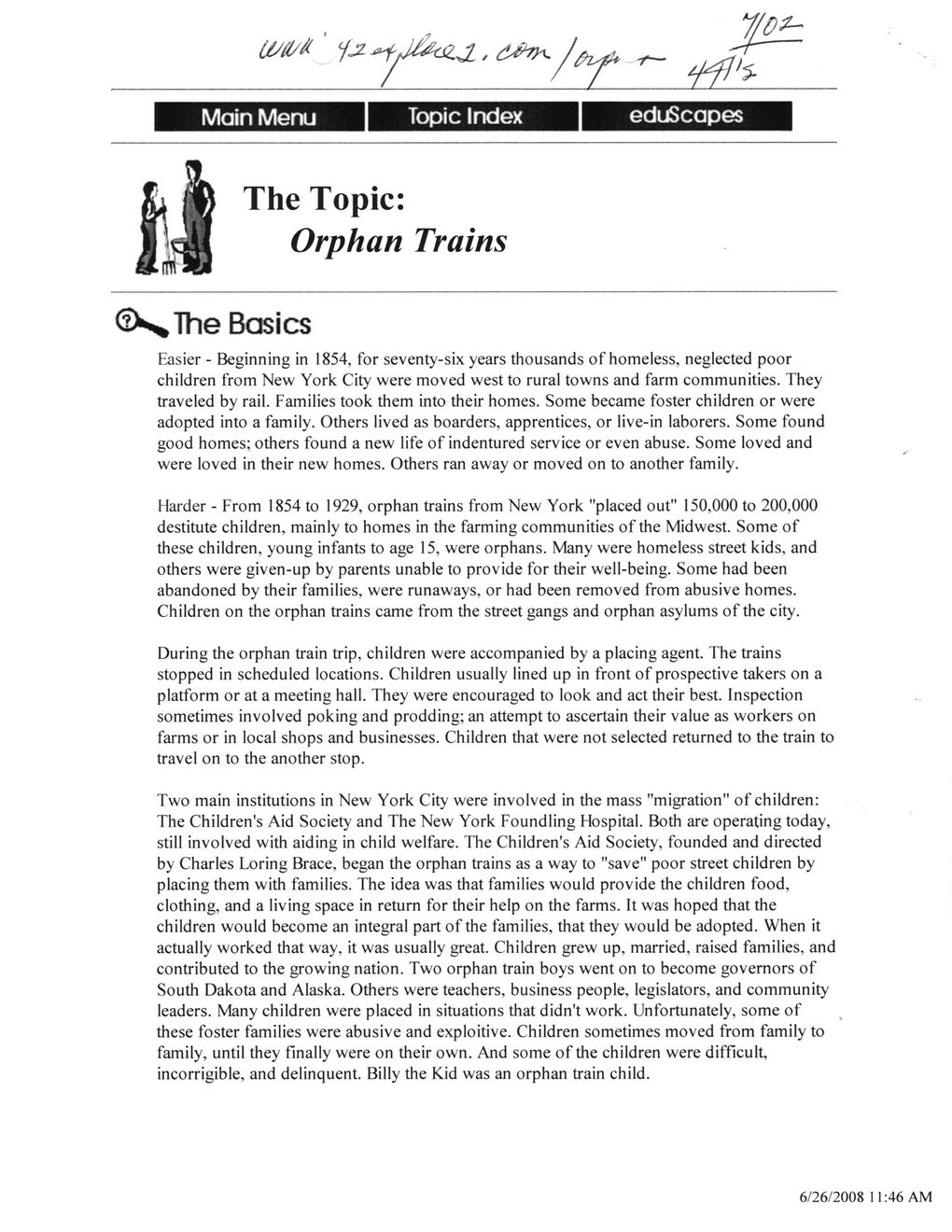This text was obtained via automated optical character recognition.
It has not been edited and may therefore contain several errors.
'0*- Main Menu Topic Index eduScapes The Topic: Orphan Trains Basics Easier - Beginning in 1854, for seventy-six years thousands of homeless, neglected poor children from New York City were moved west to rural towns and farm communities. They traveled by rail. Families took them into their homes. Some became foster children or were adopted into a family. Others lived as boarders, apprentices, or live-in laborers. Some found good homes; others found a new life of indentured service or even abuse. Some loved and were loved in their new homes. Others ran away or moved on to another family. Harder - From 1854 to 1929, orphan trains from New York "placed out" 150,000 to 200,000 destitute children, mainly to homes in the farming communities of the Midwest. Some of these children, young infants to age 15, were orphans. Many were homeless street kids, and others were given-up by parents unable to provide for their well-being. Some had been abandoned by their families, were runaways, or had been removed from abusive homes. Children on the orphan trains came from the street gangs and orphan asylums of the city. During the orphan train trip, children were accompanied by a placing agent. The trains stopped in scheduled locations. Children usually lined up in front of prospective takers on a platform or at a meeting hall. They were encouraged to look and act their best. Inspection sometimes involved poking and prodding; an attempt to ascertain their value as workers on farms or in local shops and businesses. Children that were not selected returned to the train to travel on to the another stop. Two main institutions in New York City were involved in the mass "migration" of children: The Children's Aid Society and The New York Foundling Hospital. Both are operating today, still involved with aiding in child welfare. The Children's Aid Society, founded and directed by Charles Loring Brace, began the orphan trains as a way to "save" poor street children by placing them with families. The idea was that families would provide the children food, clothing, and a living space in return for their help on the farms. It was hoped that the children would become an integral part of the families, that they would be adopted. When it actually worked that way, it was usually great. Children grew up, married, raised families, and contributed to the growing nation. Two orphan train boys went on to become governors of South Dakota and Alaska. Others were teachers, business people, legislators, and community leaders. Many children were placed in situations that didn't work. Unfortunately, some of these foster families were abusive and exploitive. Children sometimes moved from family to family, until they finally were on their own. And some of the children were difficult, incorrigible, and delinquent. Billy the Kid was an orphan train child. 6/26/2008 11:46 AM

Orphan Train Riders of BSL Document (038)